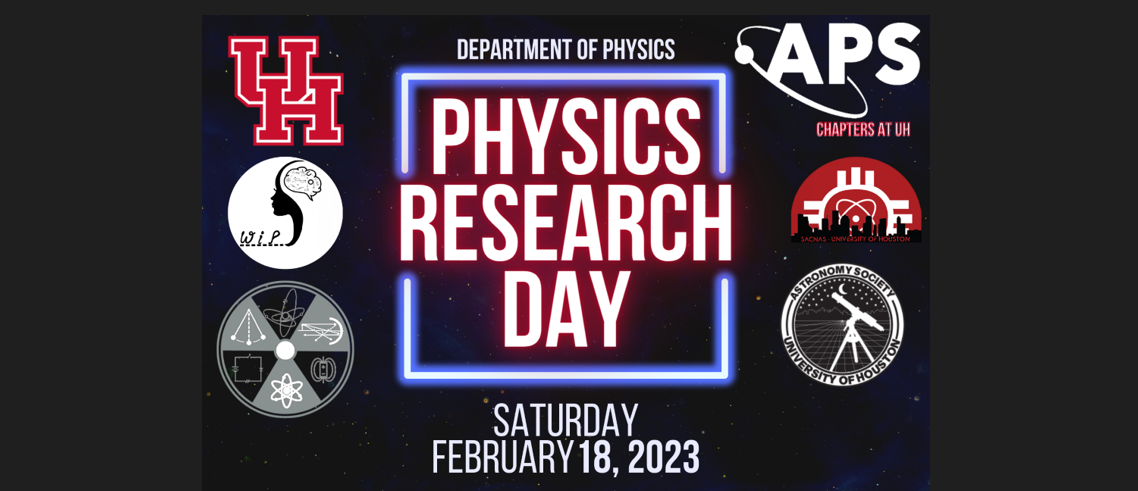Conveners
Parallel Session 2
- Claudia Ratti
- Rene Bellwied (University of Houston (US))
Description
Parallel Session 2 for Talks Farish Hall 213
Complex networks represent the relationships between interacting objects in a wide range of contexts, where nodes represent the interacting entities and edges represent interactions between them. In a directed signed network, the interactions can be positive (+1) or negative (-1), with the state of a node dictated by the state of its upstream neighbors. Biological regulatory networks are an...
Tania Ghosh 1,2, R.K.P. Zia 1,3, and Kevin E Bassler 1,2
1Department of Physics, University of Houston, Houston, Texas
2Texas Center for Superconductivity, University of Houston, Houston, Texas
3Department of Physics, Virginia Tech, Blacksburg, VA
Arguably the most fundamental problem in Network Science is finding structure within a complex network. One approach is to partition the...
Recent experiments have seen surface superconductivity in Weyl semimetals, which raises the question of whether Fermi arcs can support superconductivity without any proximity effect from the bulk. This question is of further interest as the 2D surface is lower in dimensionality but has a finite density of states. In contrast, the 3D bulk is higher in dimensionality, but the density of states...
The human genome is divided into exons and introns. Exons are the expressed portion of the gene and must be separated from the introns (the “junk” portion of DNA) during a process called splicing before they can be expressed as proteins. This division is import for alternate splicing, where the same gene can be expressed with different composite exons. But this can result in genes from two...
The chiral vortical effect is a chiral anomaly-induced transport phenomenon characterized by an axial current in a uniformly rotating chiral fluid. It is well-understood for Weyl fermions in high energy physics, but its realization in condensed matter band structures, including those of Weyl semimetals, has been controversial. In this work, we develop the Kubo response theory for electrons in...
Proton exchange membrane fuel cell (PEMFC) and water electrolysis (PEMWE) systems have been paying attention in recent decades in order to adapt to the increase in demand for green hydrogen and the fast development of electric vehicles. The proton exchange membrane (PEM) is one of the prime components of those technologies which plays a vital role to obtain the high efficiency and stability of...
AM2X2 (A = alkaline earth metals or divalent lanthanides; M = divalent transition metals or Mg; X = nitrogen group elements) can represent a number of high-temperature superconductors and decent thermoelectric materials. One major mystery brought to our attention in thermoelectric AM2X2 compounds is the significantly distinct thermoelectric figures of merit (zT) of AMg2Sb2 materials that can...
The charge density wave (CDW) is a condensate known to carry electric current en masse, but collective CDW transport remains poorly understood at the microscopic level. Its quantum nature is clearly revealed by oscillations of period $h/2e$ in CDW conductance vs. magnetic flux, sometimes accompanied by telegraph-like switching, in $TaS3$ rings above 77 K. Here we show evidence for quantum time...
The recent discovery of ferromagnetism (FM) in two dimensional (2D) van der Waals (vdW) materials down to the monolayer has led, 2D vdW chromium trihalides CrX$_{3}$ (X=Cl,Br and I) to gain recent research attraction because of their interesting electronic and magnetic properties. In the monolayer, all CrX$_{3}$ display in-plane FM order. The bilayer of CrX$_{3}$ becomes antiferromagnetic...
